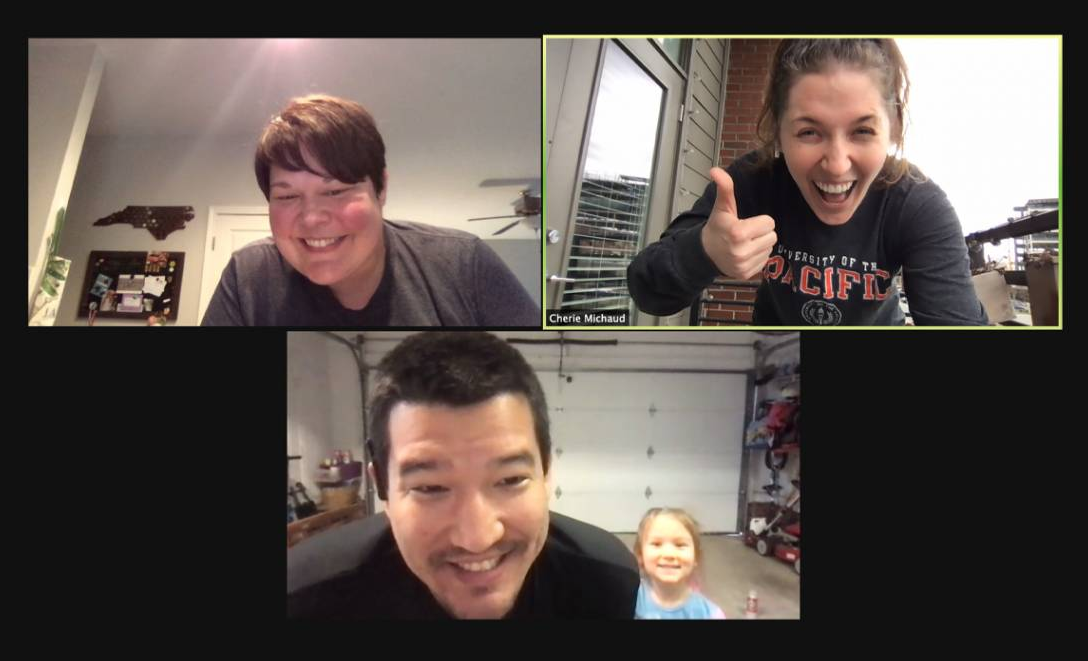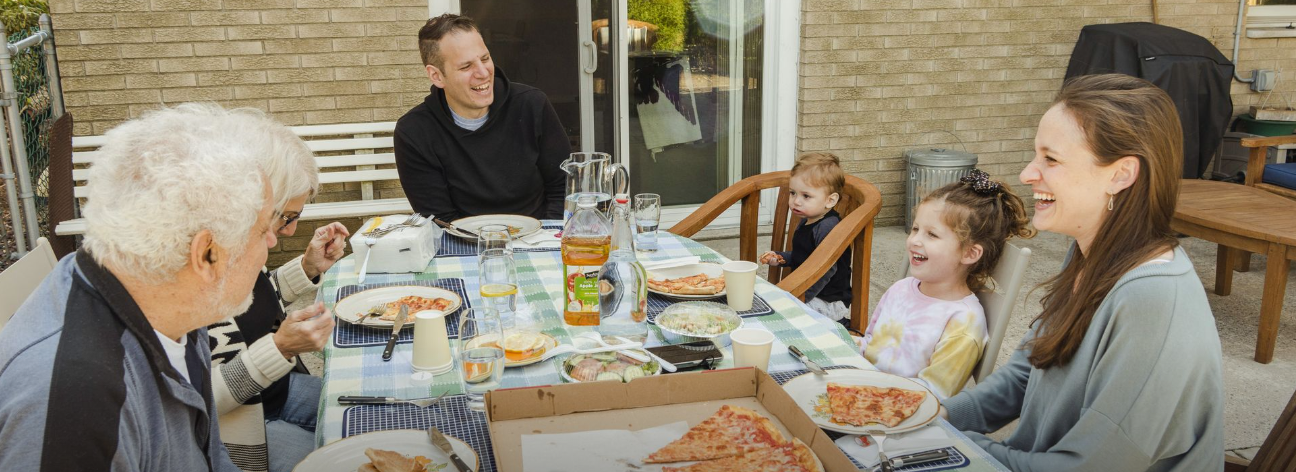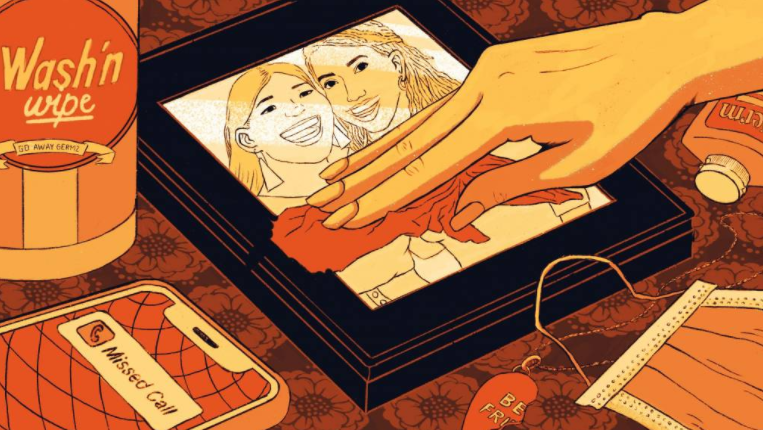“These levels of loneliness are heartbreaking. We have big holes in our social fabric,” says Rick Weissbourd referencing our loneliness report published in February. Jonathan Black from Duke University writes about how coworkers helped teammates cope with social isolation.
Read MoreRead the latest from Making Caring Common!
You’re in the right place for our media coverage, blog posts, and event information. Our work spans a range of topics, all connected by our commitment to elevate caring and concern for the common good at school, at home, and in our communities. You can review what’s new below or use the dropdowns to sort by topic and category.
Be sure to join our email list and connect with us on Facebook, LinkedIn, and Instagram, to stay current with Making Caring Common’s news and updates. If you’re a member of the media, please visit our Media Room.
Sort by topic
- Access and Equity
- Bias
- Bridging
- Building Connection
- Bullying
- COVID
- CSN
- Caring and Empathy
- College Admission
- Consent
- K-12
- Mental Health
- Misogyny and Sexual Harassment
- Moral and Ethical Development
- Parenting
- Romantic Relationships
- School Culture and Climate
- School Integration
- Social-Emotional Learning
- State of Caring
- Turning the Tide
- Voter Mobilization and Civic Education
- Youth Advisory Board
Sort by category
Creating an equitable, inclusive school culture can be key in preventing a wide array of social and emotional problems and promoting the development of caring, responsible, and respectful children, even when school is remote. Because students primarily take signals from other students about social norms and what is ethically acceptable, and because students have inside knowledge about social dynamics, it is mainly students – especially acting together – who can change norms. One way to empower students to create positive social norms is by creating school climate committees comprised of students who work with peers and staff to develop these norms. This session focuses on the School Climate Committee, a strategy designed to help students – and adults – work collaboratively to shape their school environment. This session focuses on:
how to create a strong, effective committee of youth leaders that represents a diversity of voices among the student body and works with school staff to prevent bullying and other school social problems
how to use data to inform decision making and improve school climate, including creating more caring, inclusive social norms
how to provide students with a sense of agency and empowerment
We look forward to sharing evidence-based best practices. This will be an interactive experience, so we look forward to hearing what's working in your school community too! Please email caringschools@makingcaringcommon.org with any questions.
Read MoreLoneliness has become universal as the global pandemic has caused social isolation like we've never experienced. "Sure, we have social media, Zoom and other 21st century ways of connecting, but these are simply Band-Aids to cover a deeper sense of loneliness," writes Brennan Barnard in Forbes.
Read MoreCollege admissions in 2020 looked very different from previous years, says Lucille Brewster in this piece published by Vassar College’s student newspaper, The Miscellany News.
“We know many students didn’t have access to the same opportunities that they have had in the past, many had to care for others or had their own challenges, and many schools temporarily changed their grading policies,” said Vassar’s Dean of Admissions and Financial Services Sonya Smith.
Smith was one of 370 admissions officials to sign our Care Counts in Crisis: College Admissions Deans Respond to COVID-19 statement.
"There are all the concerts we didn’t go to, the plays & dinner parties we didn’t enjoy...This is a loss of emotional nutrition. It manifests socially as loneliness," writes David Brooks in the New York Times, referencing our survey data suggesting that 61% of young adults felt "serious loneliness" during the pandemic.
Read MoreHave you interacted more with your neighbors in the last year? During the pandemic, people have grown closer to their neighbors and sometimes relied on them during crises." There is this quality of a powerful shared experience, and many people have really helped one another,” says Rick Weissbourd in this Wall Street Journal piece by Anne Marie Chaker.
Read MoreResearch shows that acting with kindness and care makes people feel good by building connections with others and reinforcing a positive view of themselves. This sense of connection is all the more important in a time when students may not be interacting in person. Kindness and caring are contagious—they can spread and influence people to do good deeds beyond their existing networks.
This session will share a strategy to help students practice intentional acts of caring and to share and learn from their experiences. Learn how to help students reflect on and discuss how to encourage more kindness and caring, for themselves and others, at their school and beyond. They will practice regular intentional acts so they become routine and normalized parts of students’ lives. The activity encourages a variety of kind and caring acts, including self-care.
Read MoreIn this New York Times piece, Richard Schiffman talks with Rick Weissbourd about how young adults and the elderly could be less isolated if they had more contact.
“The elderly have so much to share with young people — wisdom about love, work, friendship, mortality and many other things...young people have so much to share with the elderly about a rapidly changing world — not just technology, but new and important ways of thinking about race and racism, justice, sexuality and gender and other critical issues,” says Weissbourd.
“Of course, the COVID-19 pandemic has displaced all our lives in different ways and although a concern, a general increase in loneliness across all age groups is to be expected. But the pandemic seems to be having a particularly crushing impact on young people and urgent action must be taken to protect the mental health of this demographic,” writes Philip Adkins, National IAPT Clinical Lead at Vita Health Group.
Read MoreDo zoom calls and social media platforms actually make us feel more lonely?
"Managing our health and well-being as a global community through this pandemic and beyond requires prudent attention to a great paradox of our time: we have more connections than ever, yet we are living through an epidemic of loneliness," writes Steve Boehlke in The Room.
Read MoreHow is the college experience been affected by remote classes?
"I imagined making long-lasting memories with my friends, but I’m just feeling disconnected from them.”
“It’s the end of freshman year and I haven’t made any new friends at school."
Marcia Morris (M.D.) mentions our work in Psychology Today and suggests how students can cope with the emotional and social loneliness.
Human beings were never meant to be in total isolation for so long.
"While many have been able to isolate with their partner or roommates, single folks and folks living alone are often in true isolation," writes Gretchen Brown in Rewire.
Here we are at this young age wanting to start things, wanting to go out into the world and try everything and be young and travel and see each other," Andreatta (23) says. "But we are stuck in our apartments."
Hadia Bakkar talks with young adults, mentioning our loneliness report in Npr's MindShift.
Read MoreHave a conversation with a grocery store employee. Enjoy an over-the-fence laugh with a neighbor.
“A lot of people are so depleted right now that a simple hello can be really meaningful,” says Rick Weissbourd in his interview with Anne Marie Chaker in The Wall Street Journal.
Read More"About half of lonely young adults in the survey reported that no one in the past few weeks had 'taken more than just a few minutes' to ask how they are doing in a way that made them feel like the person 'genuinely cared,'” emphasizes Ash-har Quraishi, referring to our recent loneliness research.
Find out more in this KATC piece about a hotline that connects teens with peers in an effort to combat pandemic loneliness.
Check out this segment on CBS News that references our Loneliness Research and highlights the report's findings. Lana Zak interviews Dr. Roger McIntyre, professor of psychiatry at the University of Toronto, about examining the impact of the pandemic on mental health.
Read MoreHow can young adults meaningfully connect with their peers during school closures and remote learning?
Authors of our recent loneliness report emphasize that we we must shift from “Americans’ focus on the self” toward “the common good,” writes Kerry McDonald in this Foundation for Economic Education article.
Research shows that gratitude is a predictor of both physical and mental well-being and can be regarded as a moral emotion related to recognizing the feelings and intentions of others. In turn, gratitude can lead to increased motivation to reciprocate and extend generosity to others.
In this session, hosted by Harvard’s Making Caring Common project, educators will explore a strategy to help students recognize and express gratitude to others in school and beyond. Click through to learn more and register today!
Read More"We perpetuate dehumanizing stereotypes of each other that diminish our capacity to care; and we define success as being self-sufficient and achievement oriented rather than relationship oriented,” write Rick Weissbourd, Making Caring Common faculty director, Niobe Way, founder of the Project for the Advancement of Our Common Humanity, and Marc Brackett, director of the Yale Center for Emotional Intelligence in this piece publish by The Hill.
Read MoreHow can college students stay mentally strong during these challenging times?
Dr. Aviva Legatt from Forbes mentions our loneliness research and suggests three specific ways that youth can stay mentally strong during the Covid era and beyond.
Read More




















